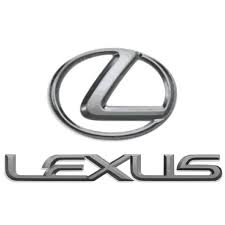GS 350 AWD V6-3.5L (2GR-FSE) (2009)
/Page-2694007.png)
General Information
INTRODUCTION: HOW TO TROUBLESHOOT ECU CONTROLLED SYSTEMS: GENERAL INFORMATION
GENERAL INFORMATION
-
A large number of ECU controlled systems are used in the LEXUS GS460/350. In general, ECU controlled systems are considered to be
very intricate, requiring a high level of technical knowledge to troubleshoot. However, most problem checking procedures only involve
inspecting the ECU controlled system's circuits one by one. An adequate understanding of the system and a basic knowledge of electricity
is enough to perform effective troubleshooting, accurate diagnosis and necessary repairs.
-
FOR USING THE TECHSTREAM
Connect the cable of the Techstream to the DLC3, turn the engine switch on (IG) and attempt to use the Techstream. If the display indicates that a
communication error has occurred, there is a problem either with the vehicle or with the Techstream.
-
If the communication is normal when the Techstream is connected to another vehicle, inspect the DLC3 of the original vehicle.
1. TROUBLESHOOTING PROCEDURES
-
The troubleshooting procedures consist of diagnosis procedures for when a DTC is stored and diagnosis procedures for when no DTC is
stored. The basic idea is explained in the following table.
-
Vehicle systems are complex and use many ECUs that are difficult to inspect independently. Therefore, a process of elimination is used, where
components that can be inspected individually are inspected, and if no problems are found in these components, the related ECU is identified
as the problem and replaced.
-
It is extremely important to ask the customer about the environment and the conditions present when the problem occurred (Customer Problem
Analysis). This makes it possible to simulate the conditions and confirm the symptom. If the symptom cannot be confirmed or the DTC does
not recur, the malfunctioning part may not be identified using the troubleshooting procedure, and the ECU for the related system may be
replaced even though it is not defective. If this happens, the original problem will not be solved.
-
In order to prevent endless expansion of troubleshooting procedures, the troubleshooting procedures are written with the assumption that
multiple malfunctions do not occur simultaneously for a single problem symptom.
-
To identify the malfunctioning part, troubleshooting procedures narrow down the target by separating components, ECUs and wire harnesses
during the inspection. If the wire harness is identified as the cause of the problem, it is necessary to inspect not only the connections to
components and ECUs but also all of the wire harness connectors between the component and the ECU.
